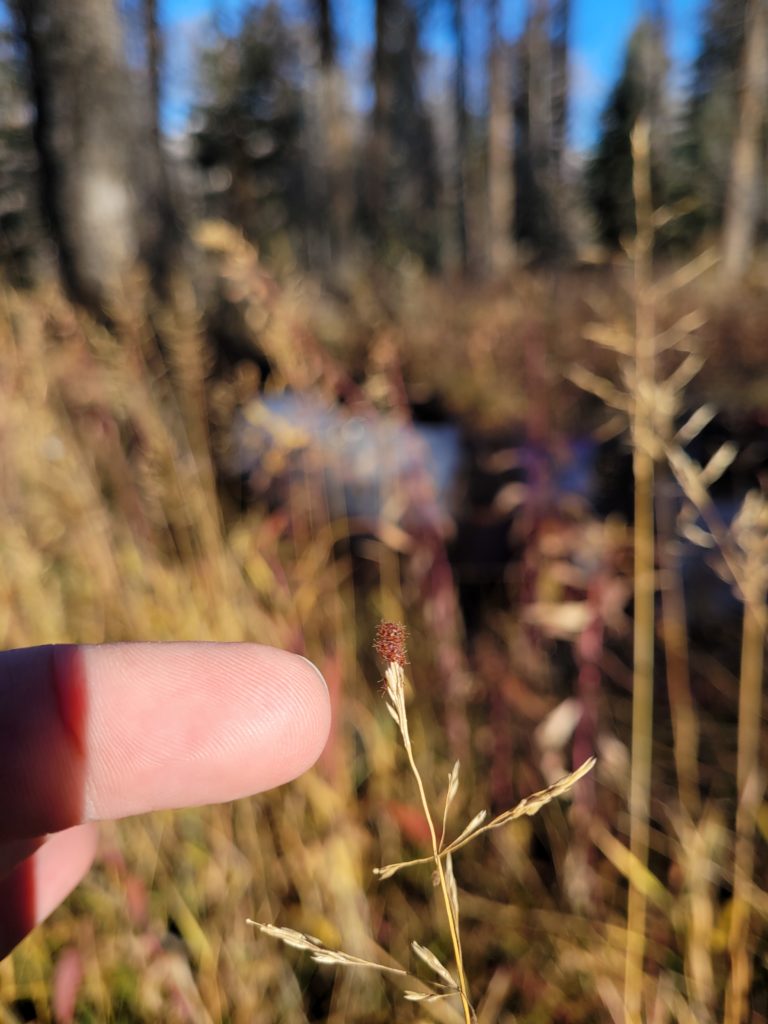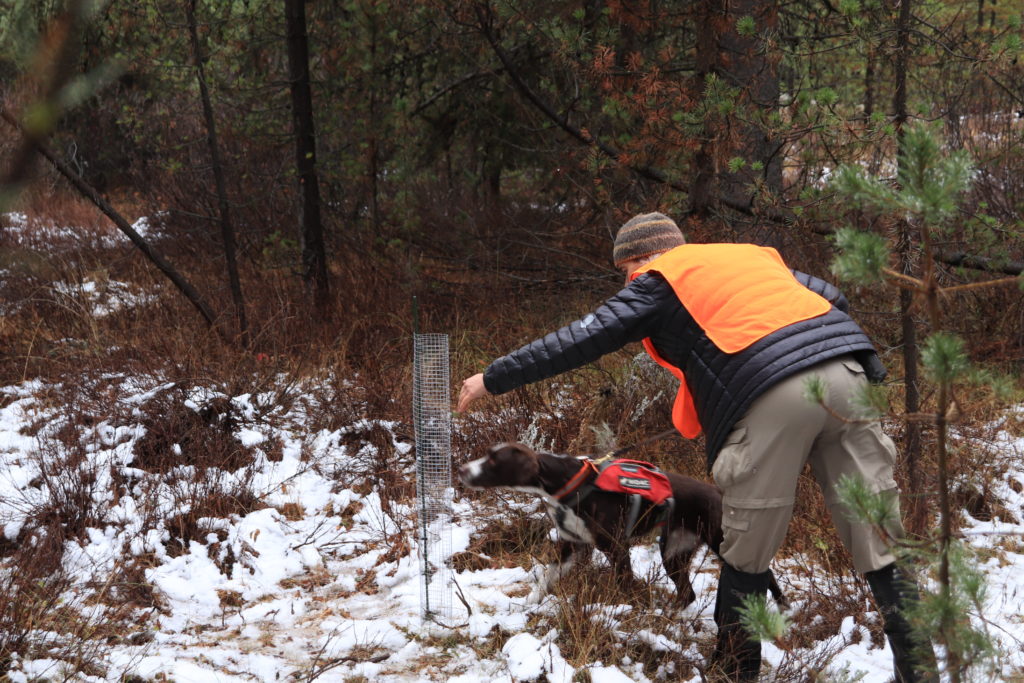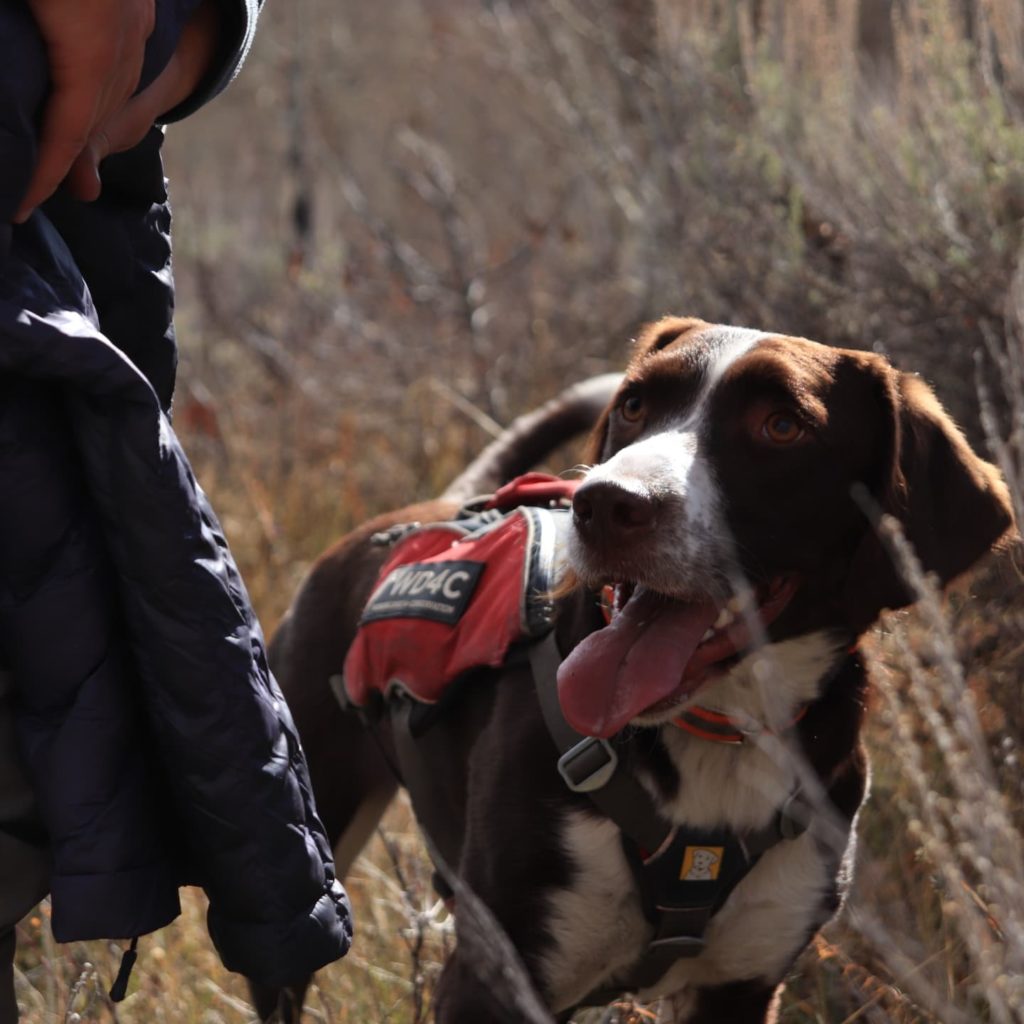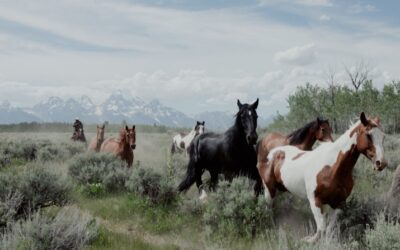On a recent Friday, Troy Koser was walking in the brush next to the Snake River in Wilson, surveying the tips of vegetation. The thing he was looking for is about the size of the head of a pin. But that small organism can pack a big punch.
“They’re very tiny, but there’s going to be, you know, 100, 200 on here. And you can imagine that when a moose is moving through. This is all like moose belly height,” Koser said. “So, they hit several of these little tiny balls at once. But then you get hundreds of larva on you and those hundreds of larva, you know, they’re on for the rest of the year.

These tiny tick balls are generally found on the tips of vegetation, but there can be hundreds of bugs on them. (Courtesy of Troy Koser)
That’s what the local moose population has been dealing with for at least a few centuries. Even when pioneers first came to Jackson Hole, they observed winter ticks, along with moose, elk and deer trying to rub the bugs off of them when they shed their coats in the spring.
“They’re not having a good time,” Koser said. “If they’re spending all that time rubbing, then that’s less time eating. That’s less time being vigilant, right? They’re just like, not happy. They’re annoyed and they’ve got other things to do. It’s the hardest time of year for them.”
Tick populations might also be growing or having a different effect on moose as the climate changes in the Greater Yellowstone Ecosystem. That’s what Koser’s studying at Montana State University, and he’s working with local biologists to figure out exactly how current climate projections—things like more rainfall, earlier snowmelt and drought—might affect the unhealthy relationship ticks and moose currently have.
“We don’t necessarily know like how many ticks are bad and if hair loss really leads to death or horrible outcomes for them. We just know it looks bad and we’re trying to figure out how bad that bad is,” he said.
But to accurately track ticks, Koser needs to find them, which isn’t always an easy task with our limited human vision. That’s where a furry sidekick named Frost comes in.
Frost is a mixed-breed puppy whose day job is sniffing out invasive species around Jackson Hole. Aimee Hurt is co-founder of the organization Working Dogs for Conservation, and she’s helping train Frost to see if he can smell small tick balls in the field.
“From the trainer perspective, the work is figuring out how to get the dog to be able to do this,” Hurt said. “And then measuring like, okay, so they can do it to the best of their abilities, is that ability helpful enough to be put into use?”
During training sessions, Hurt and Koser set up a little obstacle course for Frost. There are plant clippings with tick balls on them in wire cages throughout the woods, as well as some cages without any bugs. The idea is to assess whether the pooch can figure out which is which.

When Frost thinks he’s found a live sample of a tick ball, he sits and points his nose at the cage. (Courtesy of Troy Koser)
Hurt said Frost is getting better at approaching plants more gently and detecting tick scents from farther and farther away. Nobody’s ever tried to see if dogs can sniff out winter ticks before, so there’s a lot of trial and error. But even small signs of progress could have a big impact.

Working Dogs for Conservation trains canines all over the world, including Frost, to help protect “wildlife and wild places.” (Courtesy of Troy Koser)
“He knows tick odor, and he knows that he’s most often going to find them on the tips of plants, so he’s connecting two of the most important dots, which is understanding the odor and knowing where to find them,” Hurt said. “Because when they know where to find them, they know how to search for them.”
If Frost shows he can be useful in the field, trainers can start taking him out for real to collect data. And though winter ticks will likely never be eradicated in Jackson, Koser said it’s important to understand the extent of the problem for moose.
“Since they’re endemic, I guess for the most part, [wildlife] managers don’t really know how to get rid of them. It’s gonna be mostly, how much money should I devote to protecting our moose given climate change and what we think will happen with the ticks?” he said.
Koser also said his research is shedding more light on just how much stress moose go through every day, from avoiding trucks on Highway 22 to navigating around livestock fencing and putting up with tiny, blood-sucking parasites.





